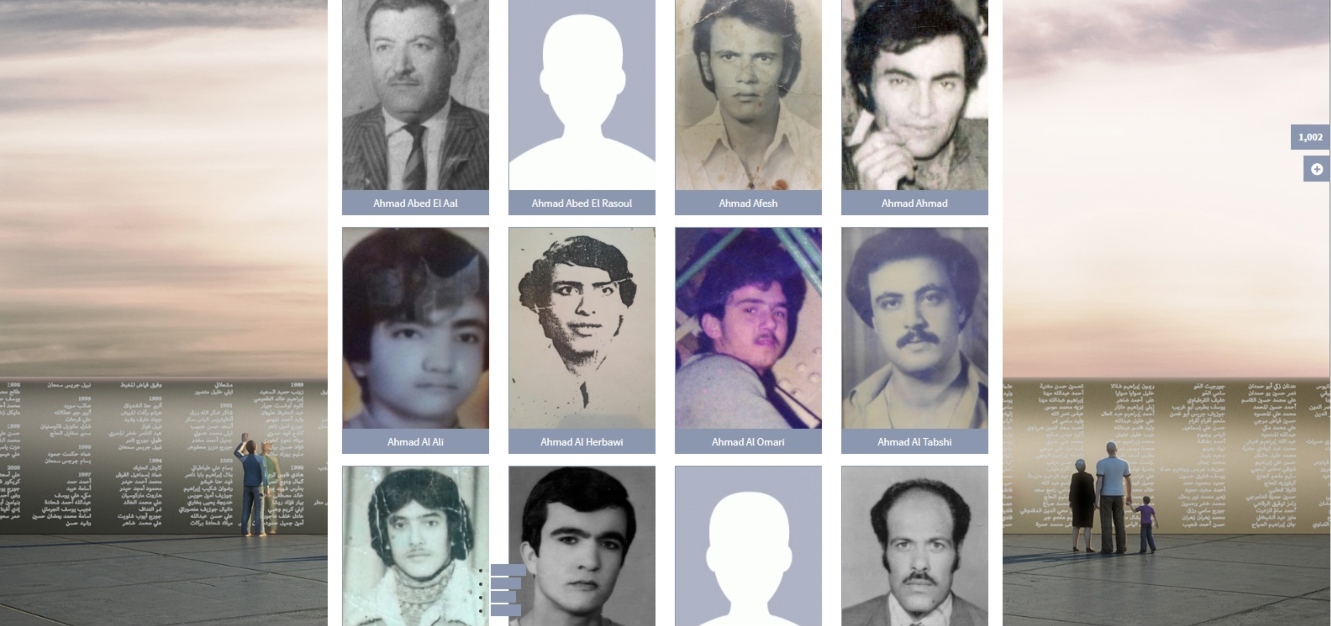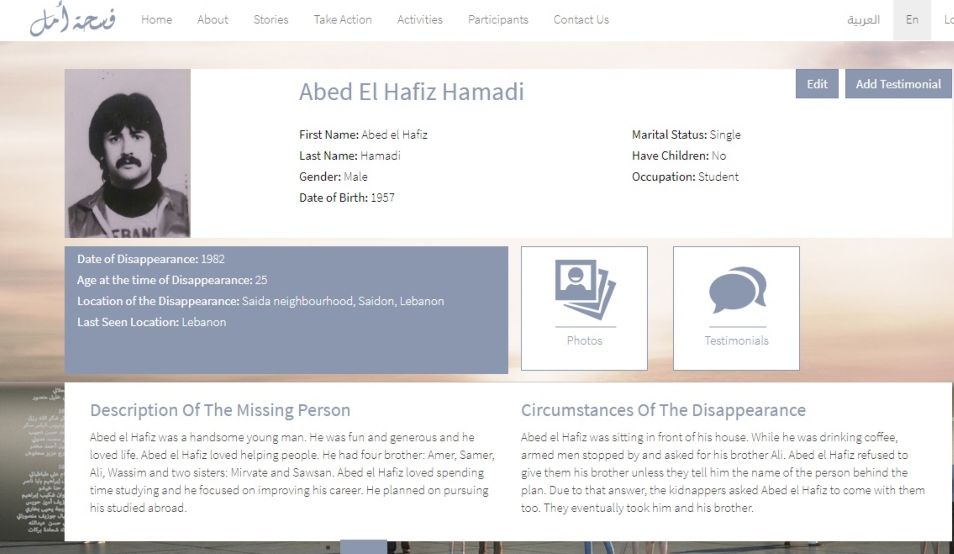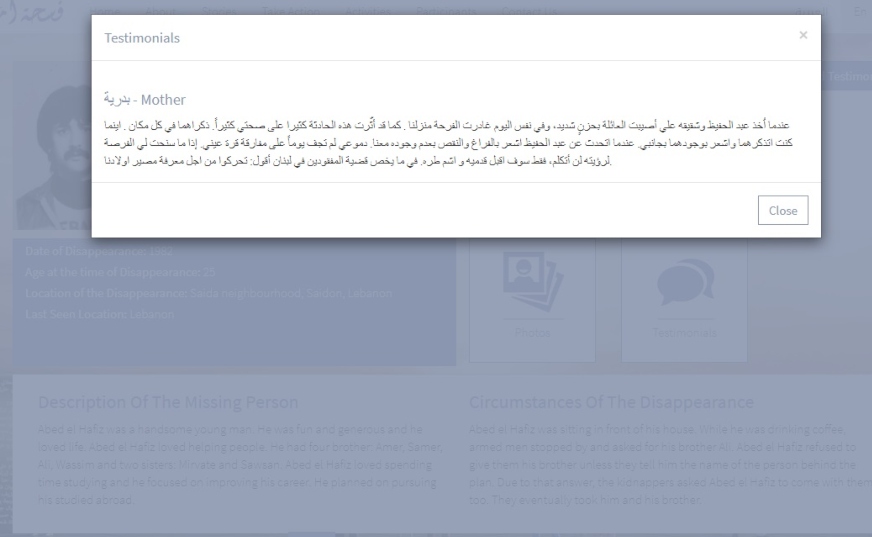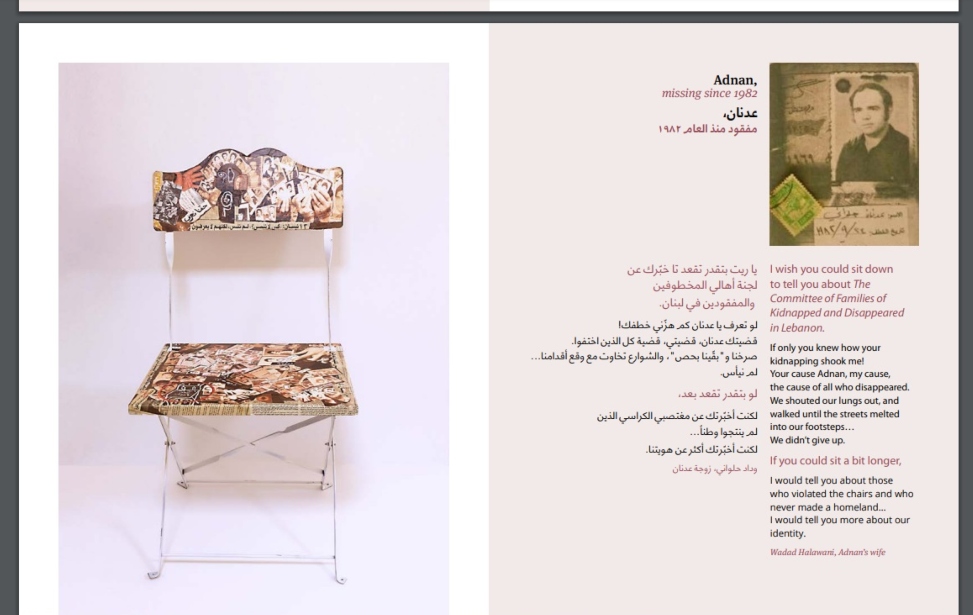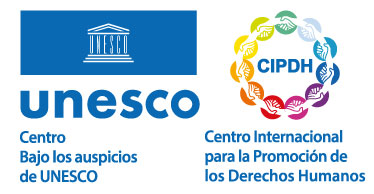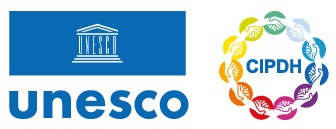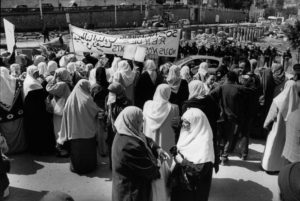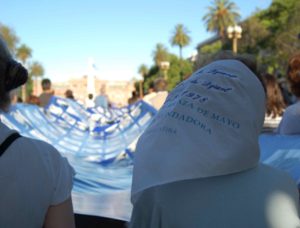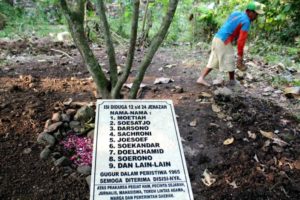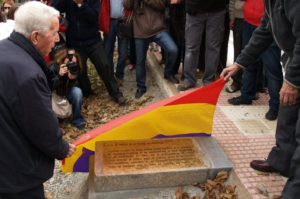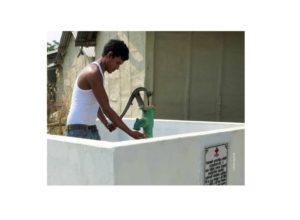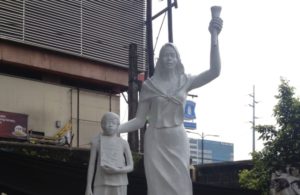Fushat ‘Amal
Archive
Theme: Armed conflict

Address
Country
Lebanon
City
Beirut
Continent
Asia
Theme: Armed conflict
Purpose of Memory
Identifying, remembering and paying homage to the people missing during the Lebanon civil war and reestablishing their legitimate place in society.
Institutional Designation
Fushat 'Amal
Date of creation / identification / declaration
2016
Public Access
Free
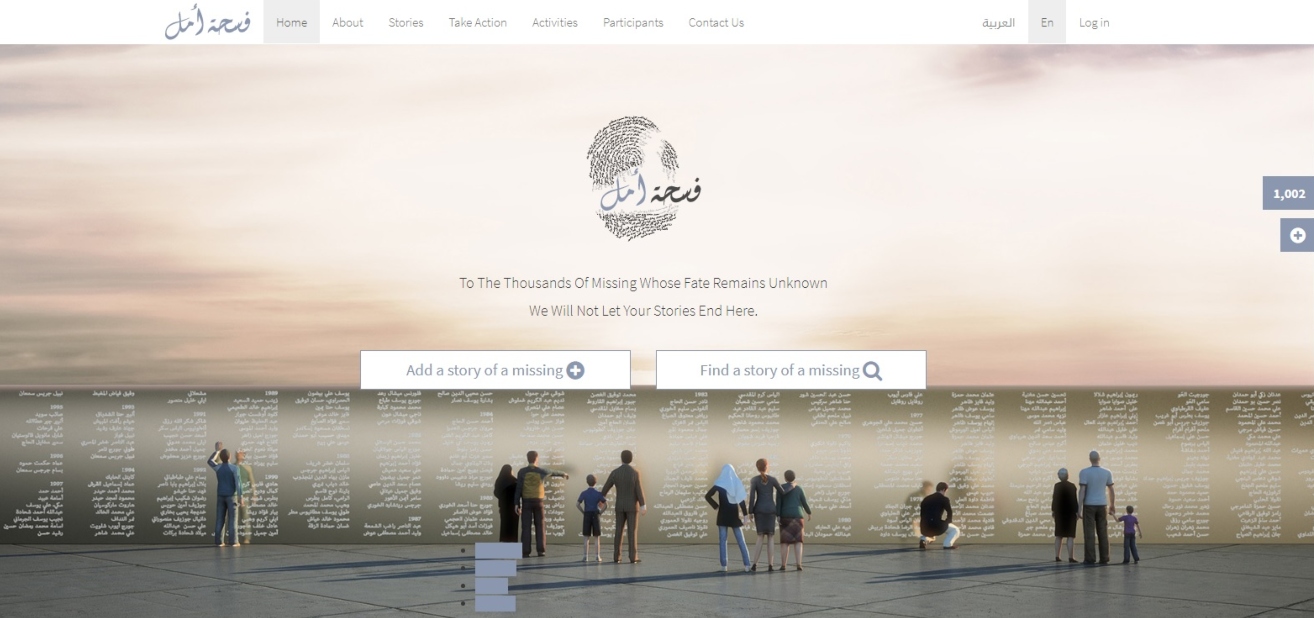
Location description
Fushat ‘Amal (“space for hope” in Arabic) is a digital interactive space featuring the stories of thousands of people who disappeared in Lebanon in the last four decades and whom their families are still looking for. The site provides the possibility for relatives of the missing people to add cases, include biographic information, data on their disappearance, pictures, videos, as well as testimonies.
The modern Lebanese state was born at the end of the First World War, with the dissolution of the Ottoman Empire in the Middle East. The Constitution of Lebanese Republic, adopted in 1926, gave formality to a country composed by a set of communities where the political practice was based on confessional communities.
In 1967, the Six-Day War where Israel fought an Arab coalition composed by Egypt, Iraq, Syria and Jordan, changed the Middle East geopolitical map. After the conflict, Israel took possession of the West Bank and Gaza. Since the repression in Jordan against the Palestinian fighters in September 1970, known as Black September, the south of Lebanon turned into a shelter for movements of the Palestinian, the Pan-Arab and revolutionary people.
The Lebanese civil war (1975-1990) confronted different groups and religious factions of Lebanon, although behind this, there were the interests of virtually every country of the region. The civil war can be divided in two main phases, separated by the Israeli intervention in 1982. In the first stage, the presence of the Palestinian resistance was the main driver of the events from 1975 until 1982. The second phase (1982-1990) was marked by the failure of the Western intervention forces, the emergence of Shiite Muslim movements, Amal and Hezbollah; the gradual retreat of Israeli troops and, finally, the intervention of Syria.
The conflict left about 145,000 dead, 17,000 missing people and more than 200,000 wounded people, many of them with permanent damage. About 800,000 people suffered forced displacement as well.
In August 1991, the Lebanese government passed an Amnesty law on war crimes and crimes against humanity during war.
The national reconciliation signed in 1990 left no room to address the issue of the missing people during the Lebanese civil war (1975-1990). The fight of their families started in 1982, when they met in the Committee of families of kidnapped and missing people in Lebanon (Families Committee) with the participation of members of different religious and ethnic communities. In 1990, the Support of Lebanese in Detention and Exile (SOLIDE) was formed, and it worked more specifically in Syrian repression.
In 2014 the Council of State, the highest administrative judiciary authority, demanded that the Lebanese Government give the missing’s relatives a copy of the report drafted by the official investigation committee on forced disappearances, implemented in 2000.
Currently, the families’ struggle is focused on collecting and preserving all the biological samples for identification of the remains found, and on the adoption of a law on missing people.
Act for the Disappeared (ACT) is a Lebanese association of human rights founded in 2010, that works with the Families’ Committee and the SOLIDE. The ACT NGO works on different initiatives of memorialization on the forced disappearance of people in Lebanon. One of them, Empty Chairs Waiting Families, consists of a publication of pictures of chairs designed and painted by families of missing people in Lebanon during the armed conflict.
In 2016, ACT released the project called Fushat ‘Amal (“space for hope” in Arabic), a digital interactive space featuring the stories of thousands of people who disappeared in Lebanon during the civil war and in the subsequent years. Seventeen associations, non-government organizations and the InternationalCommittee of the Red Cross (ICRC) participated in the preparation of the digital memorial. The digital memorial covers the issue of the missing people for a case in which a “conventional” monument in a specific geographical location can be troublesome, since the country is still very fragmented and, for many families, this could mean the end of claim to the State.
In the context of Fushat ‘Amal, the goal is to provide support to families of the missing people, to organize exhibitions, projections, inter-generation dialogue and other activities in secondary schools and universities.

